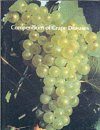About this book
Grapes are the most widely planted fruit crop with 7.5 million hectares grown throughout the world. They are also one of the most management intensive crops in existence. Couple this with the fact that a comprehensive diagnostic and pest management guide for grape crops has not been published since 1988, you have a book that is in very high demand.
The much anticipated Compendium of Grape Diseases, Disorders, and Pests, Second Edition meets those demands and more. This unique book fills an important need by wine-, table-, and juice-grape vineyard managers, their staff and consultants, as well as the researchers, extension agents, and diagnosticians who are all working in tandem to ensure these delicate crops make it safely through the growing season.
Almost twice as long as the first edition, the Compendium of Grape Diseases, Disorders, and Pests includes a tremendous amount of new research and the latest management recommendations to combat most diseases, insect pests, and abiotic disorders (weather-related damage, etc.) found in grape vineyards worldwide. And this book is truly applicable worldwide. More than 79 authors from 12 countries and 5 continents were recruited to update or prepare new sections.
The Compendium of Grape Diseases, Disorders, and Pests, Second Edition, is broken into four distinct parts:
- Part one covers diseases caused by biotic factors. It particularly addresses commonly occurring diseases caused by fungi and oomycetes, bacteria, phytoplasmas, viruses and viruslike agents (including nematode-transmitted viruses), and nematode parasites of grapevines.
- Part two discusses mites and insects that cause disease-like symptoms in grapes. Coverage includes leafhoppers and treehoppers, mealybugs, thrips, and much more.
- Part three discusses disorders caused by abiotic factors, with special emphases on chimeras, environmental stresses, nutritional disorders, the various causes of shriveled fruit, and pesticide toxicity.
- Part four offers two new sections that will help users save money and minimize pesticide use. The first, Grapevine Fungicides, discusses fungicides and cultural practices in the context of minimizing disease resistance. The second, Spray Technology for Grapevines, which emphasizes cost saving techniques and practices, helps users minimize pesticide use and ensures the chemical hits its target, not elsewhere in the environment.
In addition, the Compendium of Grape Diseases, Disorders, and Pests, Second Edition, includes an introduction that provides helpful overviews of the grape plant, its worldwide cultivation and varied uses, its history, rootstocks, morphology, and developmental stages.
Appendices include an updated list of common grapevine disease names caused by microbes, nematodes, and viruses; as well as a guide to the many equivalent names given to grapevine diseases and disorders in the English, French, German, Italian, and Spanish languages.
An expanded glossary of more than 800 terms used in Compendium of Grape Diseases, Disorders, and Pests, as well as a comprehensive index to make this resource accessible to anyone working in the grape industry, including diagnosticians, extension specialists; consultants; scientists; vineyard managers and staff; juice, fresh fruit, and raisin producers; and students.
Contents
Introduction
The Grape, Its Diseases, and Its Pathogens
The Genus Vitis, Its Species, and Its Rootstocks
Grapevine Structure and Growth Stages
Historical Significance of Grapevine Diseases
Part I. Diseases Caused by Biotic Factors
Diseases Caused by Fungi and Oomycetes
Anthracnose
Armillaria Root Rot
Miscellaneous Berry Rots and Raisin Molds
Bitter Rot
Black Foot Disease
Black Rot
Botryosphaeria dieback
Botrytis Bunch Rot and Blight
Dematophora Root Rot
Downy Mildew
Esca, Petri, and Grapevine Leaf Stripe Diseases
Eutypa Dieback
Grapevine Leaf Rust
Macrophoma Rot
Minor Foliage Diseases
Leaf Blight
Leaf Blotch
Zonate Leaf Spot
Septoria Leaf Spot
Other Minor Foliage Diseases
Phomopsis Cane and Leaf Spot
Phymatotrichopsis Root Rot
Phytophthora Crown and Root Rot
Powdery Mildew
Ripe Rot
Rotbrenner and Angular Leaf Scorch
Sour Rot
Verticillium Wilt
White Rot
Diseases Caused By Bacteria
Bacterial Blight
Crown Gall
Pierce’s Disease
Diseases Caused by Phytoplasmas
Grapevine Yellows Diseases
Australian Grapevine Yellows
Bois noir or Vergilbungskrankheit
Flavescence dorée
North American Grapevine Yellows
Palatinate Grapevine Yellows
Diseases Caused by Viruses and Viruslike Agents
Grapevine Virus Diseases
Enation Disease
The Fleck Complex
Grapevine Berry Inner Necrosis
Grapevine Leafroll Disease
Grapevine leafroll-associated virus 2 and Graft Incompatibility
Grapevine Red Blotch
Nematode-transmitted Virus Diseases
European Nepoviruses and Strawberry latent ringspot virus
North American Grapevine Nepoviruses
The Rugose Wood Complex
Vein Mosaic
Vein Necrosis
Minor Virus Diseases
Other Viruses and Virus-like Agents
Grapevine Viroids
Nematode Parasites of Grapevines
Citrus Nematode
Dagger and Needle Nematodes
Ring Nematode
Root-knot Nematodes
Root-lesion Nematodes
Miscellaneous Ectoparasitic Nematodes
Nematode Management
Part II. Mites and Insects that Cause Diseaselike Symptoms in Grapes
Leafhoppers and Treehoppers
Mealybugs
Mites
Grape Phylloxera
Thrips
Part III. Disorders Caused by Abiotic Factors
Chimeras
Environmental Stress
Nutritional Disorders
Shriveled Fruit
Pesticide Toxicity
Part IV. Grapevine Disease Management
Grapevine Fungicides
Spray Technology for Grapevines
Certification and International Regulation of Planting Materials
Appendices
Appendix I: Diseases and Disorders of Grapevines
Appendix II: Equivalent Names (English and Other Languages) of Grapevine Diseases and Disorders
Glossary
Index
Customer Reviews











































![Nuevo Diccionario Ilustrado de Micologia [New Illustrated Dictionary of Mycology]](http://mediacdn.nhbs.com/jackets/jackets_resizer_medium/15/157811.jpg?height=150&width=113)







